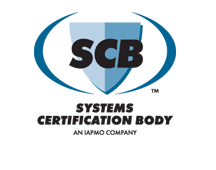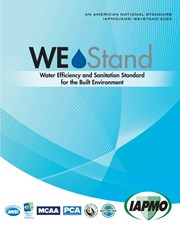|
Flow of Algorithms
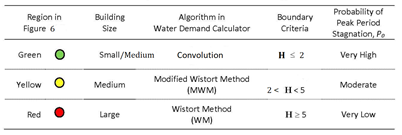
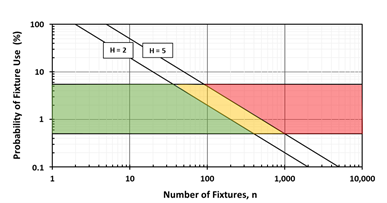
Image Courtesy of Dr. Steven Buchberger, University of Cincinnati
Water Demand Calculator
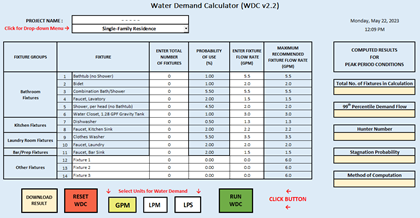
|
Water Demand Calculator: The WE-Stand provides an alternative to Hunter’s Curve when estimating water supply demand for residential buildings including single- and multi-family dwellings. This Water Demand Calculator estimates the supply demand for the whole building, as well as cold and hot water branches and risers for indoor water use based on today’s plumbing fixtures and appliances and usage patterns.
The Water Demand Calculator works in conjunction with any commonly accepted rules and procedures for sizing the water supply system. This results in the following:
- Improved scouring action in water pipes,
- Inhibition of biofilm growth;
- Shorter water dwell times in premise plumbing systems;
- Improved water quality;
- Quicker hot water delivery times throughout the plumbing system;
- Reduced water and energy consumption; and
- Reduced construction costs.
This achievement represents the first practical application of an improved method since the 1940s that does not result in excessive over design and oversizing pipes. Plumbing systems designed utilizing this new method will deliver water and energy efficiencies for the entire life of the plumbing system at a reduced cost. It is now available for use with any baseline plumbing code.
More information pertaining to the Water Demand Calculator can be found here. For a complimentary version of the Water Demand Calculator, click here
|
|
Codification and Safe Use of Composting Toilets: The WE•Stand contains the first set of comprehensive codified requirements for the design, installation, safe use, and maintenance of composting and urine diversion toilet fixtures applicable to commercial and residential applications. Composting toilet systems design provisions address corrosion resistance, concrete construction, commodes, compost processors, biologically active conditions, secondary composting, humus removal, and testing.
Alternate Water Source Systems: Detailed provisions are provided for gray water, on-site treated nonpotable water, rainwater, and reclaimed (recycled) water. Some progressive provisions include uses of gray water generated from clothes washers in landscape irrigation applications. These requirements reduce the cost of retrofitting gray water systems in single family homes and further promotes gray water reuse. The WE•Stand also allows for the installation of rainwater catchment systems up to 5000 gallons for non-potable uses without requiring inspections under certain conditions, further reducing costs to owners.
Onsite Treatment Systems: Blackwater and stormwater treatment systems covered by the WE•Stand require validation based on log reduction target performance and effluent water quality parameters. Included with these parameters are allowable water use scenarios with risk levels and appropriate methods of monitoring these systems. These requirements for a properly designed system, together with appropriate construction, operation, and maintenance, will help ensure blackwater and stormwater systems will be implemented safely and reliably.
|
Water Efficiency and Conservation: In addition to the Water Demand Calculator, the WE•Stand includes methods for conserving potable and nonpotable water used and around buildings. Such conservation methods are comprised of the following:
- Condensate recovery
- Dedicated water metering requirements
- Flow restrictors for food waste devices
- HVAC water efficiency
- Landscape irrigation system design and installation
- Leak detection and control
- Maximum flow rates of plumbing fixtures
- Non-Sewered sanitation systems
- Onsite treatment systems for nonpotable reuse
- Rainwater used in lieu of potable water
- Reuse of alternate water sources (recycled) water and gray water
- Use of alternate water source for special water features
- Vehicle wash facilities
- Water recycling units for medical and laboratory facilities
|










